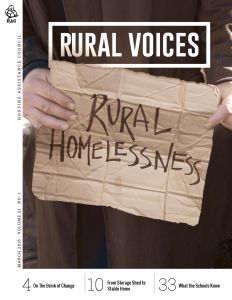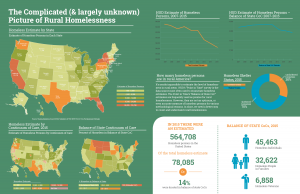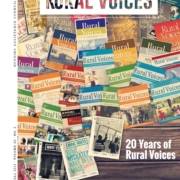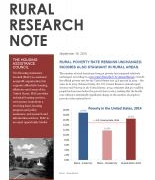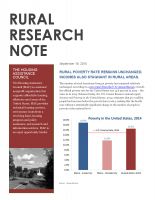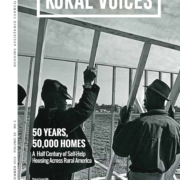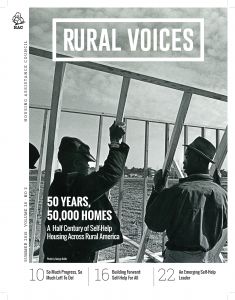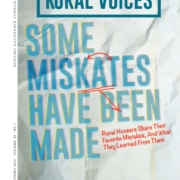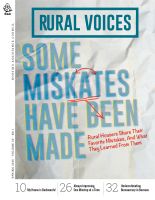HAC News Formats. pdf
September 16, 2015
Vol. 44, No. 19
• September 15-October 15 is National Hispanic Heritage Month • Government shutdown possible • USDA likely to spend all 502 direct funds but not 504 loan funds • Rural poverty rate unchanged, incomes stagnant, Census Bureau reports • Home Depot Foundation seeks proposals for rural veteran housing projects • Members of House Ag Committee question USDA officials • Section 502 packaging rule delayed again • Procedure changed for completing manufactured homes onsite • PHAs to get more flexibility for flat rents • FY16 Fair Market Rents proposed • GAO reports on overlap in rental housing programs • Two HAC trainings offered November 19-20
HAC News Formats. pdf
September 16, 2015
Vol. 44, No. 19
SEPTEMBER 15-OCTOBER 15 IS NATIONAL HISPANIC HERITAGE MONTH.
GOVERNMENT SHUTDOWN POSSIBLE. It seems unlikely Congress will pass final versions of any appropriations bills before the October 1 start of the new fiscal year, and the Administration has threatened presidential vetoes of the bills passed so far because of their low funding levels. Issues including Iran, abortion, tax measures, and the federal debt ceiling may be involved in efforts to pass a short-term Continuing Resolution, possibly lasting into December, that would keep the government working at FY15 funding levels. A government shutdown is also a possibility.
USDA LIKELY TO SPEND ALL 502 DIRECT FUNDS BUT NOT 504 LOAN FUNDS. As of September 15, USDA RD’s year-end efforts seem to be working: the agency has obligated 90.3% of its FY15 Section 502 direct loan dollars and expects to commit the rest by September 30. While 98.1% of Section 504 grant funds have been obligated, Section 504 loans are at only 51.3%. Contact a state or local USDA RD office.
RURAL POVERTY RATE UNCHANGED, INCOMES STAGNANT, CENSUS BUREAU REPORTS. The national (14.8%) and nonmetro (16.5%) poverty rates were statistically unchanged from 2013 to 2014, according to Income and Poverty in the United States: 2014, as were national and rural median incomes. In nonmetro places the rates of people lacking health insurance dropped from 12.8% in 2013 to 10.7% in 2014. HAC’s summary of the Census Bureau’s data is posted online.
HOME DEPOT FOUNDATION SEEKS PROPOSALS FOR RURAL VETERAN HOUSING PROJECTS. Awards will go to nonprofits, tribally designated housing entities, and housing authorities serving veterans at or below 80% of area median income in rural areas. Projects may be new construction or rehab, temporary or permanent housing, in progress or beginning within 12 months. Concept papers are due October 30. Contact Shonterria Charleston, HAC, 404-892-4824.
MEMBERS OF HOUSE AG COMMITTEE QUESTION USDA OFFICIALS. Hearings on September 15 and 16 covered all of USDA’s mission areas including Rural Development. Members mentioned overlap between HUD and USDA housing programs and the Section 502 mortgage programs’ “duplication” of private sector offerings. RD Under Secretary Lisa Mensah and RHS Administrator Tony Hernandez described the unique features of USDA’s housing programs, noted that staff cuts pose serious challenges for program delivery, promised increasing automation of loan processing, and emphasized the value of “trusted nonprofits” and “partners.”
SECTION 502 PACKAGING RULE DELAYED AGAIN. The final rule creating a certified loan application packaging process for Section 502 direct loans (see HAC News, 4/29/15), set to become effective on October 1, 2015 (see HAC News, 6/10/15), has now been deferred until October 1, 2016. Contact Brooke Baumann, RD, 202-690-4250.
PROCEDURE CHANGED FOR COMPLETING MANUFACTURED HOMES ONSITE. A new HUD regulation is intended to simplify the process. Contact Pamela B. Danner, HUD, 202-708-6423.
PHAS TO GET MORE FLEXIBILITY FOR FLAT RENTS. Comments are due November 9 on a HUD interim rule that supersedes part of an earlier proposed rule (see HAC News, 1/7/15). Contact Todd Thomas, HUD, 678-732-2056.
FY16 FAIR MARKET RENTS PROPOSED. These are the first FMRs using metropolitan area definitions issued by OMB in 2013, incorporating the 2010 Decennial Census data. HUD also invites feedback on alternative methodologies for setting FMRs. Comments are due October 8. Contact HUD USER, 800-245-2691.
GAO REPORTS ON OVERLAP IN RENTAL HOUSING PROGRAMS. Affordable Rental Housing: Assistance Is Provided by Federal, State, and Local Programs, but There Is Incomplete Information on Collective Performancereiterates earlier GAO findings about overlap among federal housing programs, and adds a sample of state and local programs. The report notes that overlap can have positive effects, such as helping to meet program objectives. It reviews activities of the Rental Policy Working Group, which includes representatives from several federal agencies and works with state and local agencies, and it notes collaboration efforts by state and local agencies. GAO recommends HUD work with the Rental Policy Working Group, states, and localities “to develop an approach for compiling and reporting on the collective performance of federal, state, and local rental assistance programs.”
TWO HAC TRAININGS OFFERED NOVEMBER 19-20. The cost is $75 each for these courses in North Charleston, SC. Register online for either Sharpening Your Skills: Financial Management for Rural Nonprofits or Utilizing the Low Income Housing Tax Credit Program: Creating and Preserving Affordable Housing. These are concurrent sessions; register for only one. Advance registration is required. Contact Shonterria Charleston, HAC, 404-892-4824.
